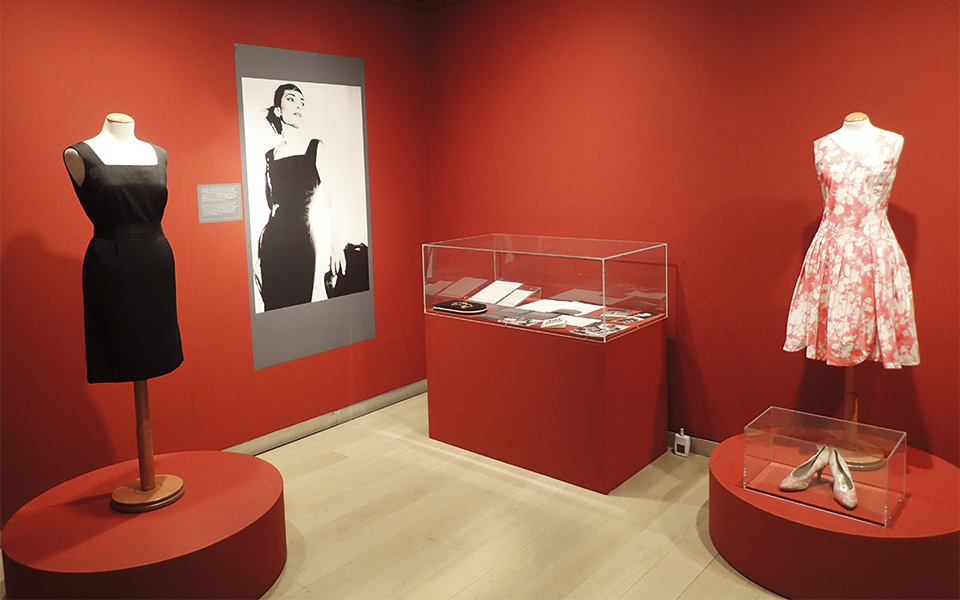Greece has always been skilled at giving the gods a human touch.
One of the 20th century’s most divine performers acquires human dimension in an exhibition now on at the B & M Theocharakis Foundation for the Fine Arts and Music: “Maria Callas: The Myth Lives On”.
The exhibition features a selection – remarkable in its breadth – of mementos, clothing, correspondence, furnishings, and personal effects drawn primarily from the collection of Nick Charalambopoulos (a collection he began at the age of 25). Curated with inspiration by Fotis Papathanassiou, the exhibition is a sensitive and compelling narrative that carries universal resonance.
Of particular interest to serious opera fans and students of cultural history, it also beautifully illustrates a life story of near mythic proportions, a story that captivated many throughout her lifetime and has continued to do so over the 40 years since her death. In an interview, she shared her most frequent prayer: “God give me what you see fit – good or bad – but give me also the strength to bear it.” Through these objects and the accompanying photographs and stories behind them, we follow her journey.

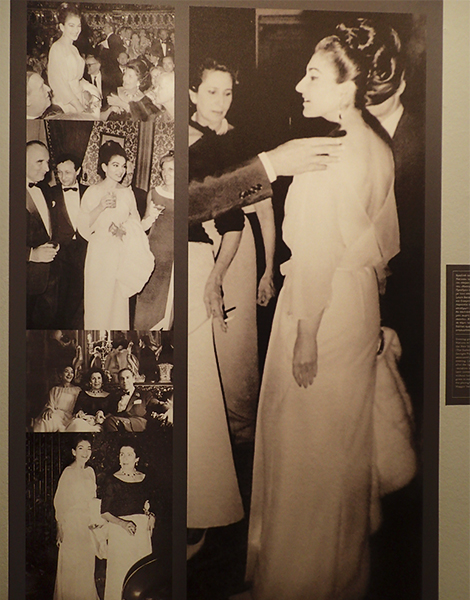
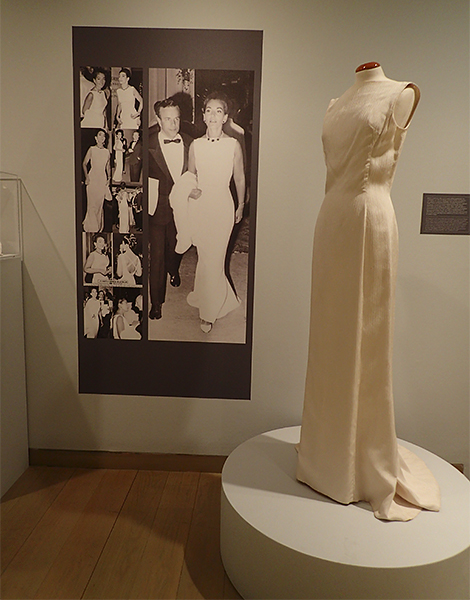
The exhibition restores the appropriate weight to the word “diva”; it also defines afresh what it means to be an icon. Some of Callas’ most memorable dresses and accessories are on display, many created for her by the Milanese couturiere, Biki (Elvira Leonardi Bouyeure) – who better to clothe the most legendary of divas than the granddaughter of Giacomo Puccini?
Her designs captured the mythic qualities of the artist while making Callas a mid-century style icon without peer – even including her later rival in love, the famously chic Jackie. (For the doubters a 1958 Horst P. Horst photograph of Callas in a Biki black cocktail dress silences the debate). Designs ranging from the pristine severity of the cocktail dress to bold statement pieces like a famous open-backed white gown of 1965, or the 1973 Hamburg gown of emerald chiffon, convey (and demand) true star power, while stylistically defining their eras.
Accessories bring her world still closer, gaining meaning from context: we see their role in her life through photographs, such as one in which she refreshes her lipstick from a gold case matching its embossed Bulgari evening bag. Significant moments, both professional and personal, become more tangible: next to her fabulous sunglasses is a photo of her sporting them on her arrival at the old Athens airport to sing Norma – the first opera to ever be presented at ancient Epidaurus. An embroidered evening bag on display is accompanied by photographs of her carrying it while out on the town in Milan with Aristotle Onassis. Until that evening, the affair had been private.
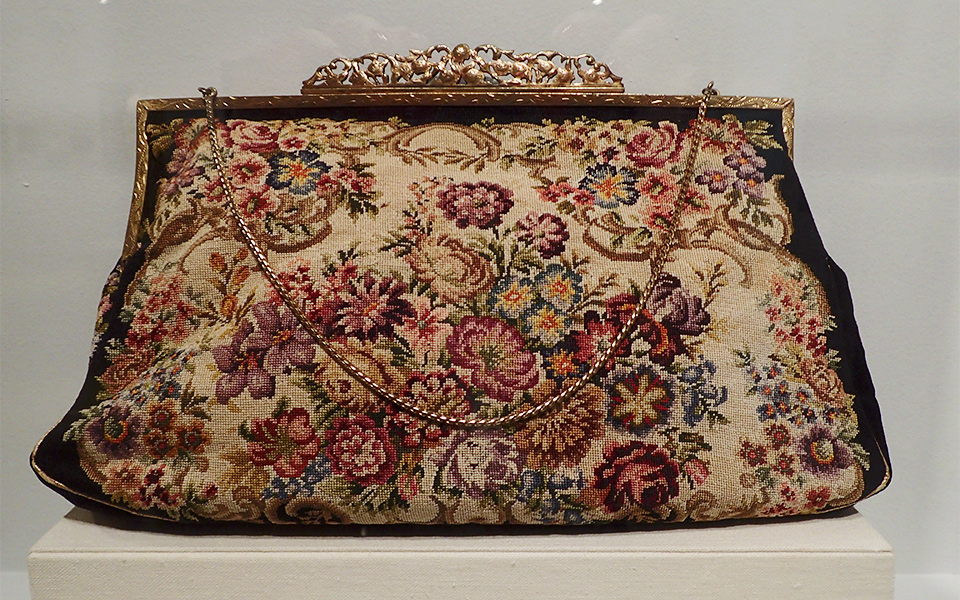

The nuances of her personal relationships are revealed through letters. The true affection Princess Grace of Monaco (Grace Kelly) felt for Callas jumps right off the royal stationery (three pages worth, the handwriting trailing charmingly up the margins). Beginning with the informal “Dear Maria”, it features exclamation points (“We miss you!”), and sweetly maternal concern: “p.s.: Are you eating enough vegetables and fruit?”
The Duchess of Windsor (Wallace Simpson) has nothing like her breezy intimacy – for her, La Divina remains “Madame Callas.” Another card written in Italian strikes a playful mood: “I mustn’t forget to send my new record immediately to my dear friend Christos! (How did I forget to bring it with me..! unbelievable!) – I personally, Maria.” Scrawled with fond exuberance in her own hand at the bottom of the note is “Lambrakis” (the actual author of the note was the newspaper publisher Christos Lambrakis, a friend and frequent visitor to her home when in Paris).
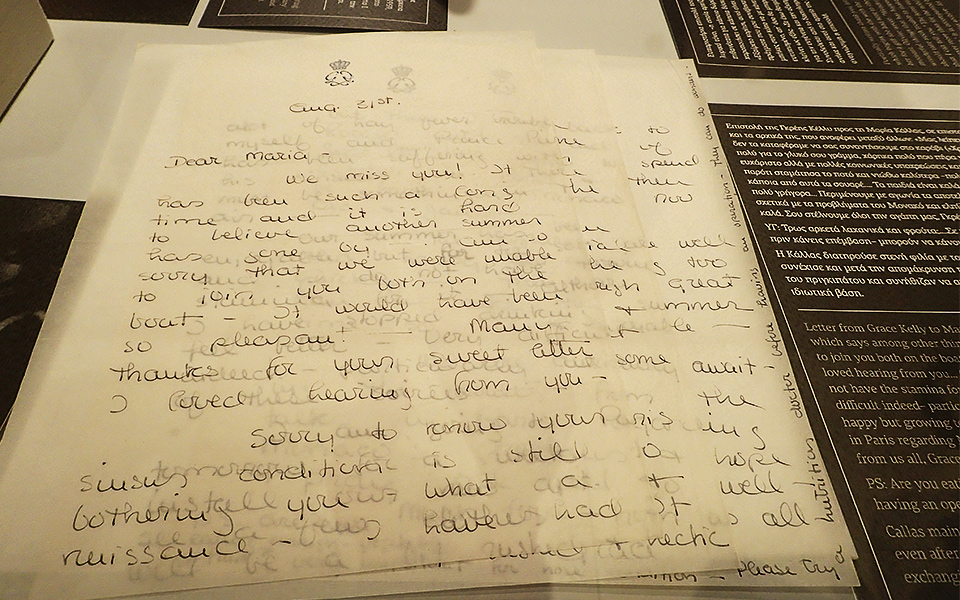
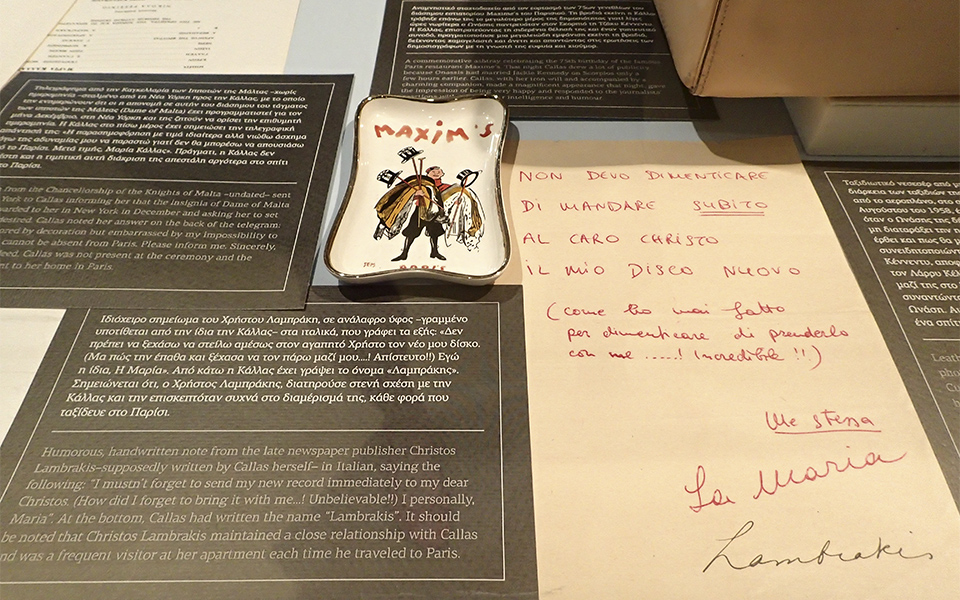
In postcards sent in her own hand to the family of her butler, Ferruccio Mezzadri, we see her affectionate regard for her staff. Likewise in a longer handwritten note to her Milan cook and maid Elena Pozzan – “Te penso spesso,” she writes, (I think of you often). Her housekeeper Bruna Lupoli related that after saying goodnight, Callas would always add “I love you.” The love was returned – her immediate staff, the most intimate companions in her private world, treasured her trust and affection. Even after her death, they never gave interviews that took advantage of this privileged relationship.
One of the humblest looking of the items proves unexpectedly poignant. A brown blanket with fringe (cashmere, Hermes) is one of two that Ms. Callas gave to Aristotle Onassis. The other one, in red, was the sole personal item Mr. Onassis brought with him for what was to be his final hospital visit; it was Ms. Callas’ red blanket that covered him the moment he died. She called a gift from Onassis – a small round gold plated box embedded with lapis lazulli – her “chestnut”, holding as it did two chestnuts from the tree outside her window. It also held her earplugs and the eye drops for the glaucoma she suffered from in later life, plus a scrap of paper in her own hand noting when to use them.
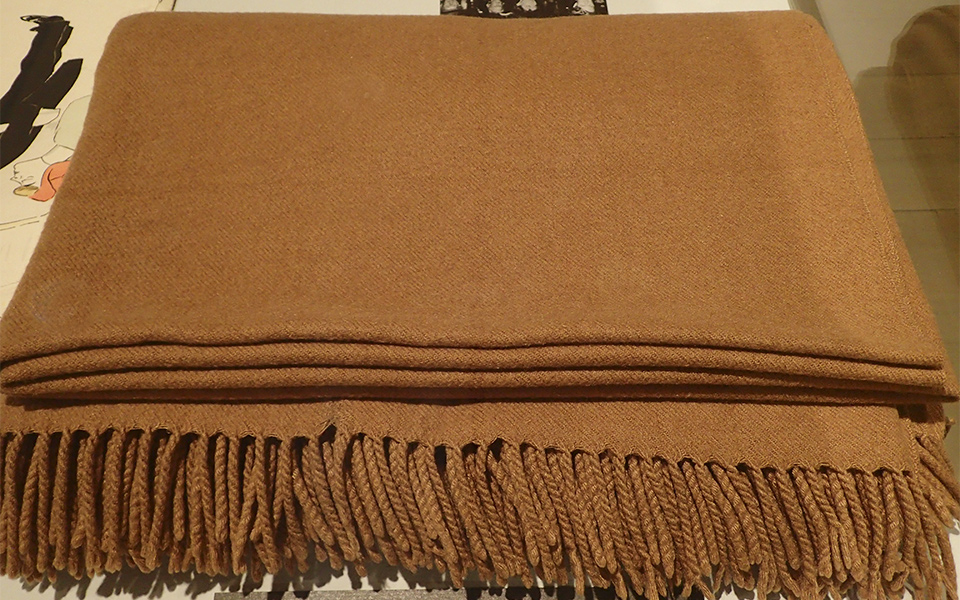
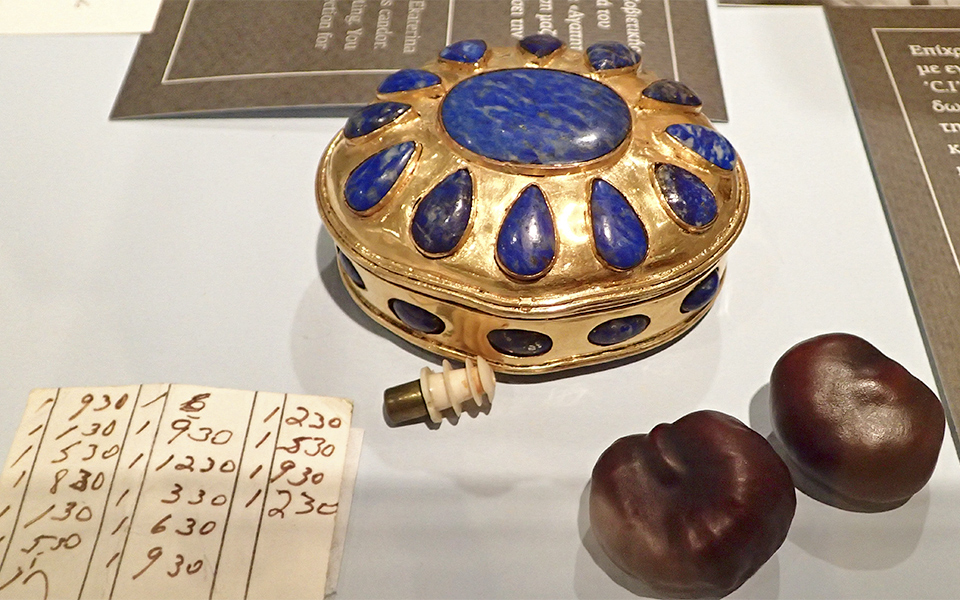
Such evidence of her physicality, her mortality, now end up serving to defy it. A lock of her hair she gave to her butler in its glass case gives the impression of a relic. The cup from which she took her final sips of coffee, her last blood work, even her death certificate, underscore her very immortality.
Of the many telegrams that arrived after her death, one – addressed to her by conductor Vittorio Gui, captures the simple truth: “Con te finisce un epoca ma inizia la tua immortalita.” (With you, an epoch ends, but your immortality begins).

